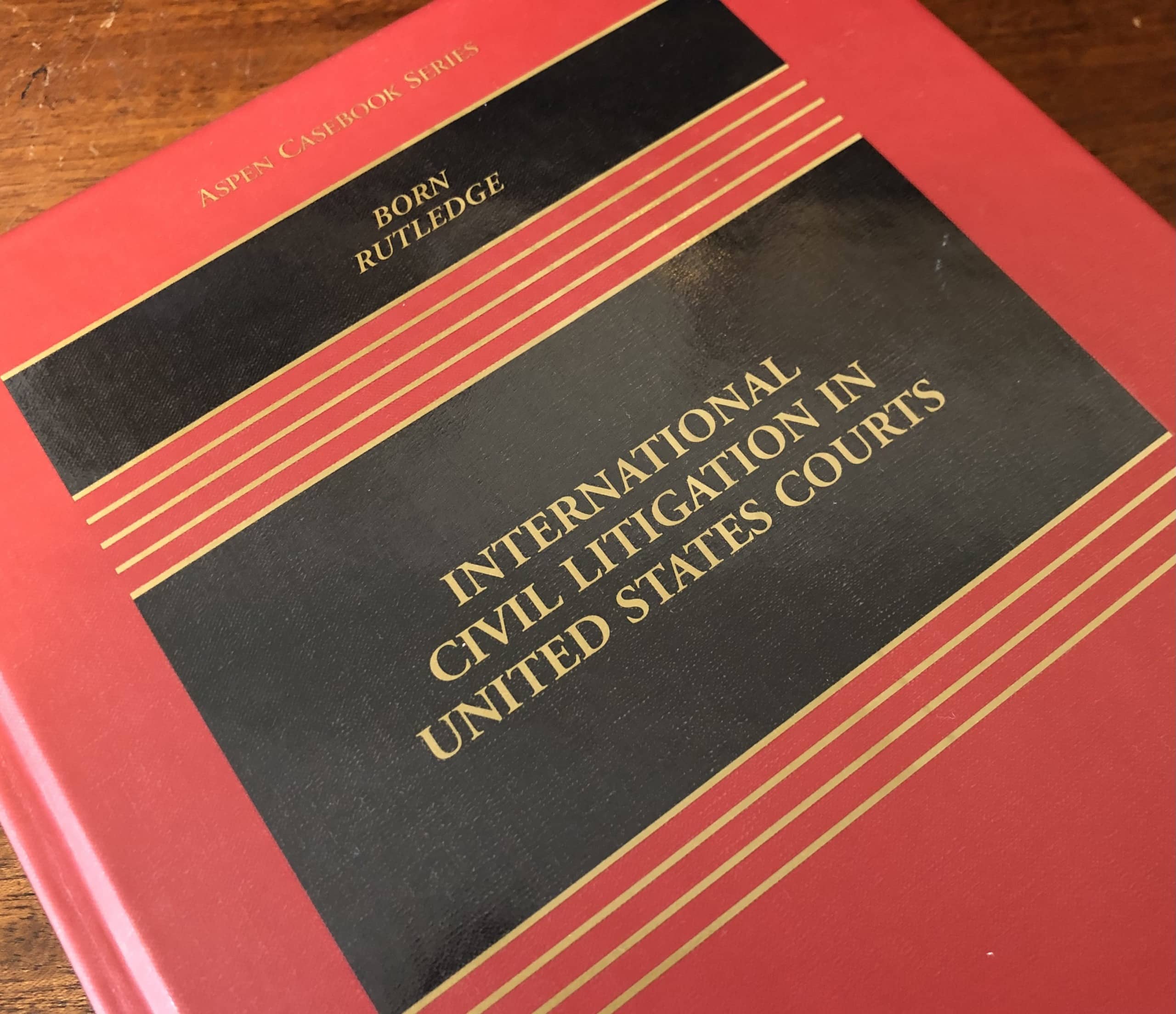Reflections on the New Edition of International Civil Litigation in United States Courts
September 22, 2022

Over twenty years ago, a horrible accident occurred at the ski resort of Kaprun, Austria. At that time, I was a young attorney working at a European law firm. The firm’s partners read about new lawsuits, filed in the United States, that threatened to bring all the procedural tools of the United States judicial system to bear on the tragedy – discovery, punitive damages, etc. They were curious whether a United States court would ever entertain a suit in these circumstances.
I walked into the firm library (remember those?) and pulled a dog-eared copy of Gary Born’s International Civil Litigation in United States Courts from the shelf. Using its narrative and notes, I explained how just such a suit might be brought and maybe even succeed.
Fast forward twenty years, a few more lawsuits, and a career change (or two) later, this book is even more important. And it has been one of the greatest blessings of my professional life to serve as co-author (since the fourth edition) with Gary, perhaps the world’s finest lawyer in the field of international dispute resolution.
Already in the last millennium, Gary (who briefly served as a full-time law professor) had produced over a thousand pages on the topic. Like a skilled archaeologist who has unearthed and collected historic treasures from several previously undiscovered cultures, Gary dug deep – assembling Huber’s tracts, linking them with seminal opinions from the Marshall Court, finding diplomatic notes, and running down amicus briefs from Supreme Court cases (in the days when one literally had to run them down). One can only imagine the countless hours that Gary spent in the library to do this original digging and equally original synthesizing. His efforts in the field embodied then – as they do now – a Stakhanovite (maybe Weberian?) work ethic, one to which I can personally attest.
The release of the book’s most recent (seventh) edition stands as no exception. As this once nascent field has matured into a freestanding discipline, the most recent developments attest to the continued judicial and scholarly interest. Perhaps the most significant development since the release of the last edition has been the publication in 2018 of the Restatement (Fourth) of United States Foreign Relations Law. That document draws on, and contributes to, themes developed in prior editions of the book, and the seventh edition further engages that dialogue. It explores where the American Law Institute departed from prior versions of the Restatement and critically examines whether the most current version improves matters.
The Restatement aside, other developments loom large. After several prior editions lamented failed efforts by the Hague Conference to complete a multilateral convention on jurisdiction and judgments, we finally have one! The book anchors this achievement in its historical discussion on both subjects, and undoubtedly its analysis will inform debates on whether the United States will ratify the treaty.
Alongside lawmakers, courts have been busy. Since the sixth edition, the Supreme Court has tackled a host of topics in the field, ranging from developments in the Alien Tort Statute to several decisions interpreting the Foreign Sovereign Immunities Act. Despite these important developments, the Supreme Court’s ever-shrinking docket (far smaller than when Gary or I clerked there) ensures that some of the most interesting legal issues remain in the lower courts – both federal and state (for don’t forget central considerations of federalism in foreign affairs that Gary identified long before such topics became vogue in legal academia). With its distinctive style (replete with a healthy dose of citations and footnotes), the book continues to ensure its place not only as an instructional text for students but also as an indispensable tool for practitioners, whether in the United States or abroad (even those who don’t have law libraries anymore!).
Lastly, no post on the book would be complete without a nod to the band of legal academics who have contributed mightily to the field, including the four “founding editors” of this blog. Names like Coyle, Dodge, Gardner and Wuerth decorate the book’s notes and footnotes, for their contributions have greatly enriched the field. Their contributions, alongside with those from scholars like Steve Burbank, Jack Goldsmith, Linda Silberman, Paul Stephan and others, ensure that the field covered in this book remains intellectually rich, one where cutting-edge practitioners and thoughtful academics talk to – and not past – each other. As a result, the next time a case arises in far-flung corners of the world, and local law partners ask their young associates whether United States courts will hear the matter, chances are that they have taken a class in international dispute resolution, and they can confidently turn to their own dog-eared copies of International Civil Litigation in United States Courts to supply the answer.